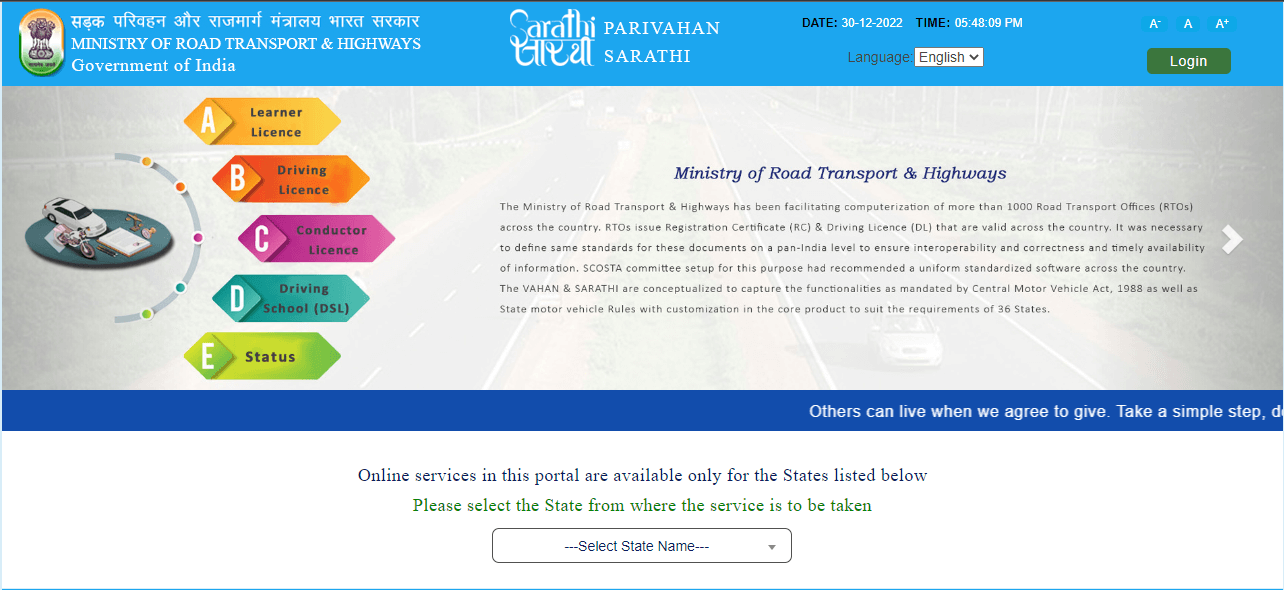Get all the information about letter of credit, which includes the definition, types and all the processes also.
Companies that regularly engage in international trade frequently use Letters of Credit (LC), a form of credit. Banks and Non Bank Financial Companies (NBFCs) provide this service as a payment guarantee to exporters. If a payment delay or default happens, businesses involved in the import and export trade can rely on a Letter of Credit, a payment instrument offered by banks and non-bank financial companies.
Companies with international operations typically work with unidentified vendors, who must be guaranteed payment before they engage in any business dealings. Therefore, a Letter of Credit is a financial instrument that guarantees payment to Import and Export businesses.
What Is Letter of Credit?
A commercial letter of credit is a legally binding agreement between two banks (the ‘issuing bank’ and the ‘confirming or advising bank’) whereby the ‘issuing bank’ promises to pay the ‘beneficiary bank’ (the ‘buyer bank’) for goods or services that the ‘buyer bank’ has purchased (seller). The issuing Bank agrees with the applicant (the buyer) to honor the credit upon presentation of documents that comply with the terms and conditions of the credit upon the request of the beneficiary (the person who will ultimately benefit from the letter of credit). As a result, the issuing Bank stands in for the Bank’s customer as the payment recipient.
Letter of Credit Features
- The Collateral/Security may include the Buyer’s Fixed Deposits, Bank Deposits, etc., against which the LC is issued
- Depending on the type of Letter of Credit, the Bank may impose additional fees
- The International Chamber of Commerce (ICC) issues guidelines for any Letters of Credit
- This process involves no physical transfer of goods or services and only the exchange of documents, so the letters of credit must be correct. The letter should be accurate regarding the seller’s name, the date, the amount, the product’s name and quantity, etc
- Incorrect information about the buyer, the product, the expected delivery date, etc., can cause a bank to reject a payment
- Because the only thing any parties are trading is paper rather than actual goods or services, any potential flaws in the latter won’t affect how much money gets exchanged hands.

Basics of a Letter of Credit Transaction
Applicant
Typically, the party initiating an LC transaction is the buyer or importer of goods. They are obligated to fulfill payment if the documents are presented to the bank in accordance with the LC terms
Beneficiary
The recipient of the LC, usually the seller or exporter, is known as the beneficiary. Upon presenting compliant documents, the beneficiary receives payment from the nominated bank
Issuing Bank
The bank representing the importer or buyer, providing the guarantee or credit for the transaction, is referred to as the issuing bank. It becomes responsible for payment upon receipt of compliant documents from the negotiating bank
Negotiating Bank
Acting on behalf of the beneficiary, typically the seller or exporter, the negotiating bank facilitates the transaction by claiming payment from the issuing bank or the opening bank.
Types of Letter of Credit
Credit on Sight
In this form of credit, a business owner only needs to present a bill of exchange and a sight letter to a lender to receive immediate funding. Regarding availability, a sight letter is the fastest type of letter of credit.
Time Credit
Time credit is a bill of exchange in which the payment is made at the end of a specified period negotiated between the lender and the borrower. This type of credit is tied to a specific time frame. A borrower can get a few days to repay the loan after receiving the goods, thanks to the grace period defined in the letter of credit.
Standby Letter of Credit (SBLC)
To obtain foreign currency funds from international lenders, importers can use a credit mechanism known as a Standby Letter of Credit (SBLC), which is issued by a domestic bank and guarantees payment to an overseas lender if the borrower fails to repay the loan on time.
Revocable Credit
The issuing Bank of a revocable credit LC has the authority to alter or terminate the LC’s terms and conditions at any time. If there is a change to the letter of credit, the issuing Bank need not notify the beneficiaries.
Irrevocable Credit
For an LC to be considered ‘Irrevocable,’ the issuing Bank must be unable to alter the terms and conditions in any way. The Bank is obligated to follow the terms of the letter of credit.
Transferable Credit
As the name implies, a transferable LC is one in which the beneficiary’s rights can be transferred to a third party. The precise conditions may vary based on the specific business or industry.
Importance of Letters of Credit
A letter of credit is a reliable payment mechanism since international trade involves factors such as distance, differences in laws among countries, and the lack of personal contact. Documentary credit letters are governed by the Uniform Customs and Practice for Documentary Credits of the International Chamber of Commerce.
Letter of Credit Terminology
Issuing Bank
The financial institution responsible for issuing the letter of credit on behalf of the buyer, ensuring adherence to its terms.
Applicant
The purchaser who initiates the letter of credit application and commits to fulfilling the specified payment.
Beneficiary
The recipient, typically the seller or exporter, who receives payment from the issuing bank upon meeting the letter of credit’s terms.
Confirmed Letter of Credit
A letter of credit reinforced by a secondary bank, the confirming bank, alongside the issuing bank, providing added assurance to the seller.
Irrevocable Letter of Credit
A letter of credit unalterable without unanimous consent from all involved parties, ensuring its stability and reliability.
Standby Letter of Credit
A backup payment method utilised if the buyer fails to meet contractual obligations, serving as a financial safeguard.
Uniform Customs and Practises for Documentary Credits (UCP)
Internationally recognised regulations governing the utilisation of letters of credit in global trade transactions.
Example of a Letter of Credit
Here is a sample of a letter of Credit
|
Dear Bank, This letter serves as a request for a letter of credit for [Name of Company]. We are seeking a letter of credit for $IAmount] to cover the cost of [goods or services]. The letter of credit will be used by [Name of Company] to purchase goods or services] from [Name of Supplier]. The purchase will be made on [Date], and payment is expected to be received by [Date]. We have enclosed the necessary documents to support the establishment of the letter of credit, including [list documents]. Please contact us if you have any questions or require additional information. We appreciate your prompt attention to this matter and look forward to doing business with you. Sincerely, [Name of Company] |
Process To Apply For a Letter of Credit
- The Purchaser and the Vendor Conclude a Business Transaction 1. The seller requires a letter of credit as payment assurance
- The buyer submits a request to his Bank for a letter of credit to be issued in favor of the seller
- The buyer’s Bank accepts the buyer’s credit risk and issues and sends the credit to the correspondent bank (advising or confirming). Typically, the seller’s location and the correspondent bank’s location are the same (beneficiary)
- The original credit will be sent to the seller after the advising Bank verifies it (beneficiary)
- After the goods have been shipped, the seller (the beneficiary) verifies and creates the necessary documentary requirements to support the letters of credit. There may be significant variations in the documentation needed to do business with different companies
- Payment is processed after the Seller submits the necessary documents to the advising or confirming Bank
- The documents are reviewed by the advising or confirming Bank to ensure they adhere to the letter of credit’s conditions
If all the paperwork checks out, the advising or confirming Bank will collect the money by doing the following:
- Having the issuing Bank’s account credited with the money
- Waiting for the issuing Bank to make a transfer after receiving the necessary paperwork
- Reimburse to a different bank as specified in the credit
- The Bank that is providing advice or confirmation will then send the paperwork to the Bank that is issuing the money
- The issuing bank will check the paperwork to ensure it’s in order. If everything is in order, the buyer’s account will be debited by the issuing Bank
- The Bank issues the documents and then sends them to the buyer.
Benefits of a Letter of Credit for the Purchasers
A letter of credit usually supports a beneficiary or a seller in an exchange agreement, ensuring the seller receives the payment from the buyer or the issuing bank.
Letters of credit are also useful if a purchaser makes a payment to a seller for an order and the seller fails to deliver the order on time. Using a letter of credit, the purchaser will be able to get paid with the money he or she spent. Hence, this way, the purchaser will get a refund.
Conclusion
Today’s generation has globalized the buying and selling process. These days, India trades internationally with a wide variety of nations. A high level of trust and confidence is required for international business transactions.
A letter of credit, which acts as a buyer’s certificate of authentication and keeps the buyer and seller together at this crucial juncture, is vital. The primary benefit of a letter of credit is that the issuing Bank will cover the entire purchase price of the product if the buyer defaults on payment. Vakilsearch is the one-stop destination when it comes to getting all the information about Letters of Credits.
Frequently Asked Questions
Is there a fee for a letter of credit?
Typically, banks impose a fee for issuing a letter of credit, often calculated as a percentage of the total credit amount. The specific cost varies depending on the bank and the size of the credit.
How does a letter of credit help the purchasers?
The letter of credit ensures that the seller will receive payment from the issuing bank, even if the buyer doesn't pay, giving the buyer confidence that the seller will be paid and lowering the risk of doing business with them.
What are 4 types of letters of credit?
The four main types of letters of credit include: revocable, irrevocable, confirmed, and unconfirmed.
Which LC is best?
Among these, irrevocable confirmed letters of credit are often considered the best due to their higher level of security for both the buyer and the seller, providing assurance of payment and shipment.
Which is better: CAD or LC?
Letters of credit provide exporters with greater assurance than cash against documents. Consequently, they are regarded as a more secure payment method in international trade compared to documentary collections.
Is LC risky?
No, LCs represent one of the most reliable tools accessible to global traders for securing transactions.
Can LC be Cancelled?
Once issued, an irrevocable letter of credit cannot be cancelled or altered without the explicit consent of all parties involved, including the buyer, the seller, and the issuing bank. The issuing bank lacks the unilateral authority to amend any terms of an ILOC.
What are 90 day payment terms in LC?
In an LC, a 90-day sight term means the exporter won't get paid until 90 days after presenting the shipment's draft to the bank.
What is the maturity of LC?
The LC Maturity Date is determined by three distinct criteria. Firstly, it is defined as the date that falls five Business Days before the Maturity Date. Secondly, it corresponds to the 30th Business Day preceding the Revolving Credit Maturity Date. Lastly, unless accelerated sooner as per the terms outlined, it is set as the first anniversary of the Closing Date. These specifications provide clarity and structure regarding the LC Maturity Date under various circumstances within the agreement.
Can LC be Cancelled after expiry date?
An L/C is unchangeable, yet it can be adjusted or revoked with the consent of the issuing bank, the confirming bank (if applicable), and the beneficiary. However, in this instance, there's no necessity to cancel the L/C since it has already expired.
Read more,










